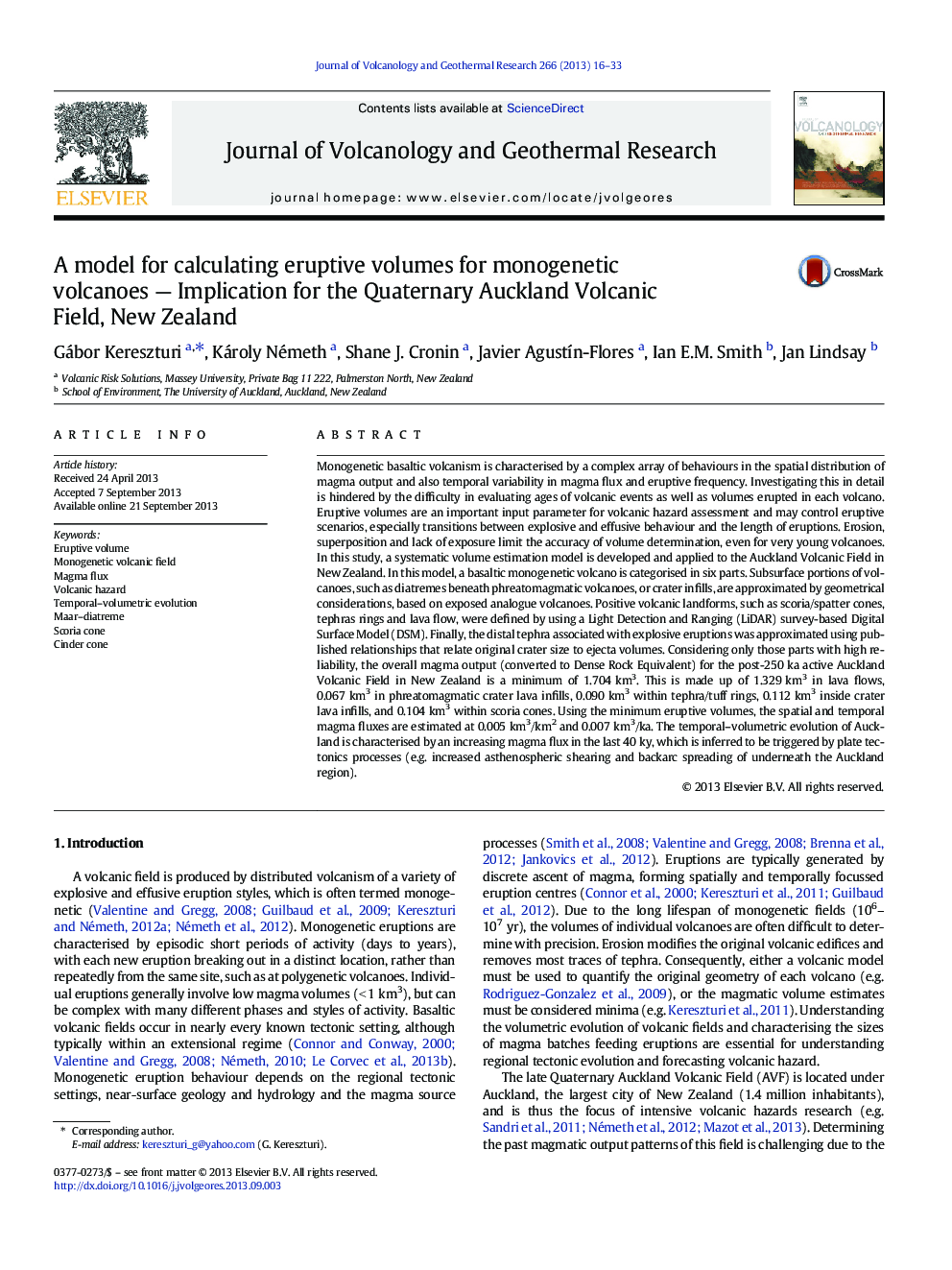| کد مقاله | کد نشریه | سال انتشار | مقاله انگلیسی | نسخه تمام متن |
|---|---|---|---|---|
| 4714640 | 1638355 | 2013 | 18 صفحه PDF | دانلود رایگان |

• General scheme is given for eruptive volume estimate for monogenetic volcanoes.
• Spatial and temporal eruptive flux is estimated.
• Magma output of the field is changing over time.
• Eruptive volumes were integrated into the temporal development of the Auckland volcanic field.
Monogenetic basaltic volcanism is characterised by a complex array of behaviours in the spatial distribution of magma output and also temporal variability in magma flux and eruptive frequency. Investigating this in detail is hindered by the difficulty in evaluating ages of volcanic events as well as volumes erupted in each volcano. Eruptive volumes are an important input parameter for volcanic hazard assessment and may control eruptive scenarios, especially transitions between explosive and effusive behaviour and the length of eruptions. Erosion, superposition and lack of exposure limit the accuracy of volume determination, even for very young volcanoes. In this study, a systematic volume estimation model is developed and applied to the Auckland Volcanic Field in New Zealand. In this model, a basaltic monogenetic volcano is categorised in six parts. Subsurface portions of volcanoes, such as diatremes beneath phreatomagmatic volcanoes, or crater infills, are approximated by geometrical considerations, based on exposed analogue volcanoes. Positive volcanic landforms, such as scoria/spatter cones, tephras rings and lava flow, were defined by using a Light Detection and Ranging (LiDAR) survey-based Digital Surface Model (DSM). Finally, the distal tephra associated with explosive eruptions was approximated using published relationships that relate original crater size to ejecta volumes. Considering only those parts with high reliability, the overall magma output (converted to Dense Rock Equivalent) for the post-250 ka active Auckland Volcanic Field in New Zealand is a minimum of 1.704 km3. This is made up of 1.329 km3 in lava flows, 0.067 km3 in phreatomagmatic crater lava infills, 0.090 km3 within tephra/tuff rings, 0.112 km3 inside crater lava infills, and 0.104 km3 within scoria cones. Using the minimum eruptive volumes, the spatial and temporal magma fluxes are estimated at 0.005 km3/km2 and 0.007 km3/ka. The temporal–volumetric evolution of Auckland is characterised by an increasing magma flux in the last 40 ky, which is inferred to be triggered by plate tectonics processes (e.g. increased asthenospheric shearing and backarc spreading of underneath the Auckland region).
Figure optionsDownload as PowerPoint slide
Journal: Journal of Volcanology and Geothermal Research - Volume 266, 1 October 2013, Pages 16–33